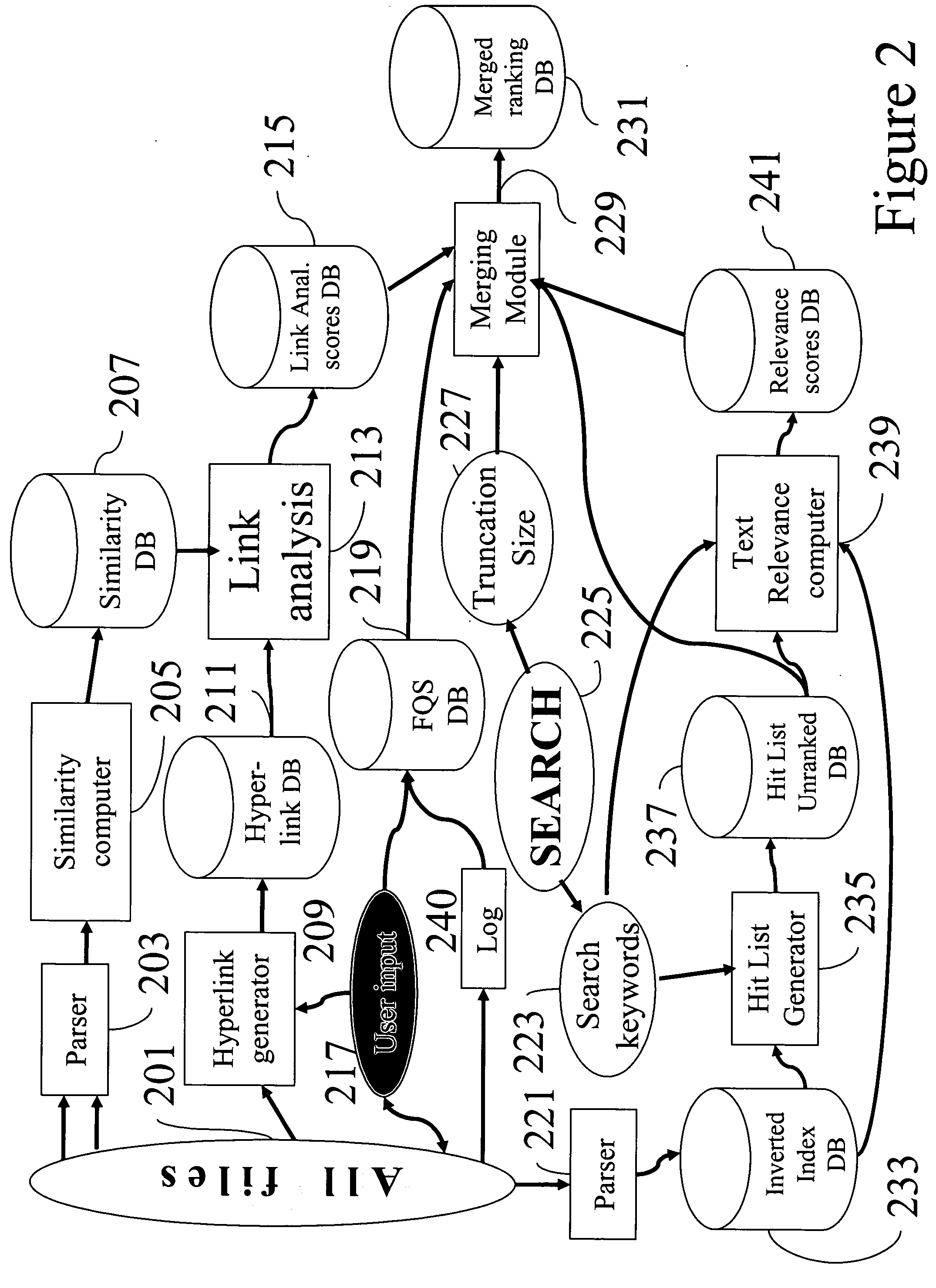Method, system, and computer program product for searching for, navigating among, and ranking of documents in a personal web
a technology of personal web and ranking system, applied in document management systems, instruments, data processing applications, etc., can solve the problems of inability to remember what they are all, current state of the art in technology to aid search and navigation over personal files is rather limited, and the current situation of any user of a personal computer is frustrating. , to achieve the effect of reducing labor intensity, increasing (or decreasing) the fqs, and low possible scal
- Summary
- Abstract
- Description
- Claims
- Application Information
AI Technical Summary
Benefits of technology
Problems solved by technology
Method used
Image
Examples
Embodiment Construction
[0042] The present invention involves the building of a “Personal Web” among documents which otherwise would have little or no link structure. The Personal Web includes the combination of: (i) undirected, weighted links, based on similarity; (ii) directed, weighted links, which may or may not be anchored to text on the pointed or pointed-to document, and which represent recommendation; and (iii) weights (importance scores) assigned to the documents themselves—again representing recommendation.
[0043] We also use the term “hybrid Web” to describe this structure. The Personal Web is a hybrid in two senses. First, it uses a hybrid mixture of weighted, symmetric similarity links and weighted, directed recommendation links. Secondly, the important function of recommendation is accomplished using a hybrid mixture of directed links and file quality scores (FQSs).
[0044] Next we elaborate on the hybrid form of recommendation used in the present invention. This hybrid approach provides to th...
PUM
 Login to View More
Login to View More Abstract
Description
Claims
Application Information
 Login to View More
Login to View More - R&D
- Intellectual Property
- Life Sciences
- Materials
- Tech Scout
- Unparalleled Data Quality
- Higher Quality Content
- 60% Fewer Hallucinations
Browse by: Latest US Patents, China's latest patents, Technical Efficacy Thesaurus, Application Domain, Technology Topic, Popular Technical Reports.
© 2025 PatSnap. All rights reserved.Legal|Privacy policy|Modern Slavery Act Transparency Statement|Sitemap|About US| Contact US: help@patsnap.com



